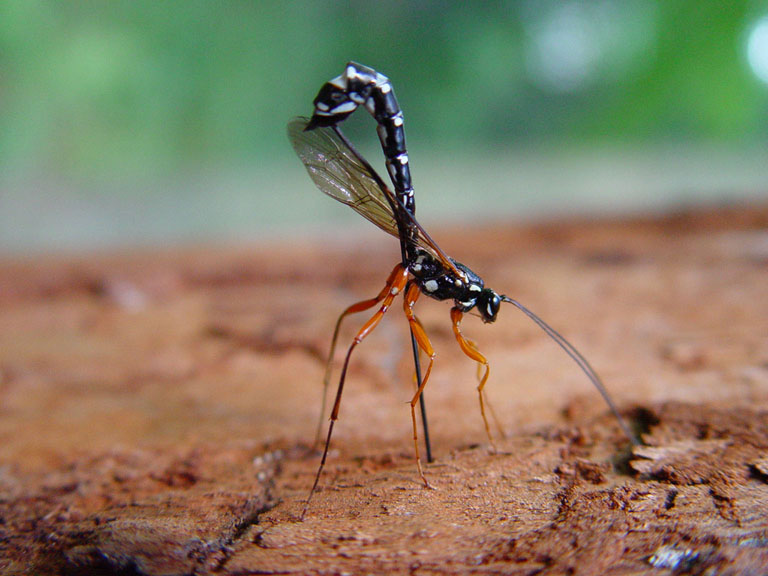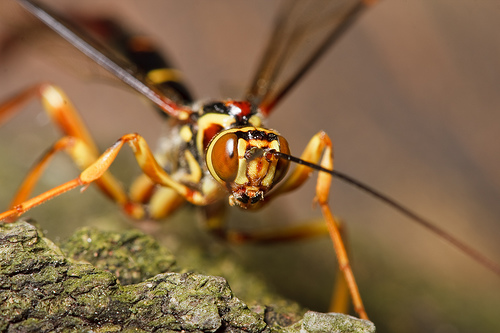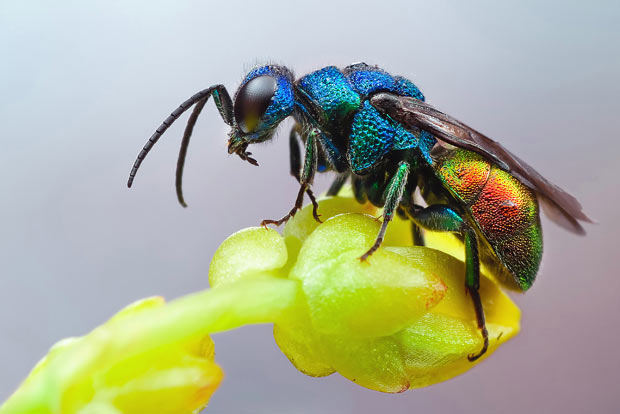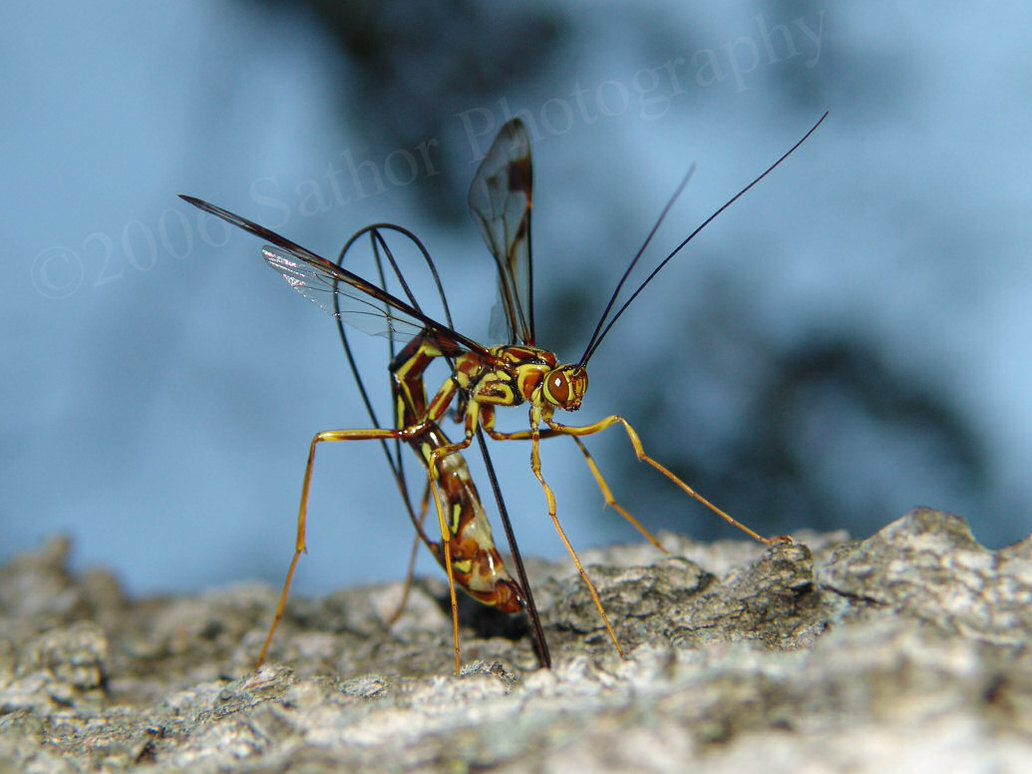Carl Zimmer Talks Parasitic Wasps

Carl Zimmer’s latest TED talk is up over at TEDEd: “The Jewel Wasp’s Zombie Slave.” The topic is parasitic wasps: the inimitably horrific behavior of the jewel and ichneumon wasps, both of which essentially turn their prey into zombies.
One would be hard-pressed to find more disturbing behavior in all of the animal kingdom than what we observe in the jewel (Ampulex compressa) and the ichneumon wasps. The two species share one distinctive characteristic: their parasite-like reproductive cycle, which includes the prolonged suffering of their hosts. While the ichneumon prefer caterpillars as their victims and the jewel wasps cockroaches, both immobilize their prey and rely on their implanted larvae to kill their victims from the inside out.
Observing this process in action makes Alien fiction seem rather pedestrian. Ichneumon is Greek for “tracker”, a fitting descriptor for these winged predators. The ichneumon wasp scans its environment for a suitable caterpillar and descends to waylay the soon-to-be host of its offspring. The caterpillar is no match for the sudden ambush as the wasp injects her eggs into the caterpillar’s body. Once the eggs hatch, the larvae slowly eat the living caterpillar from the inside, targeting the less essential organs first and slowly killing it before eating its way out of the host.
The jewel wasp adopts an even darker, more insidious approach. Its process is first to sting the prey and chew off just the right amount of the cockroach’s antenna to keep it alive for the impending torture ritual. With the roach’s motor functions compromised, the wasp leads the cockroach to its den like a dog on a leash, where the wasp lays its eggs. After three days in this paralytic state, the hatched larvae feed on the roach’s exoskeleton for 4-5 days, chewing their way into the abdomen to continue their reproductive ceremony. Over the next eight days, the wasp larvae consume the roach’s internal organs in an order which maximizes the length of time the roach will stay alive. Finally, the fully grown wasp emerges from the roach’s carapace, ending its life in the process.
The wasps’ unusual reproductive habits have been known for some time. In fact the ichneumon creature provoked particular disquiet for theologians in centuries prior. Many regarded these revelations of nature especially problematic as there are clearly other reproductive options available; no other wasp species reproduce in this way. Even Darwin himself was vexed, writing in a letter to Asa Gray:
Enjoy the video.
External link: Parasite tales: The jewel wasp’s zombie slave – Carl Zimmer
Feature image credit: insectimages.org





Comments